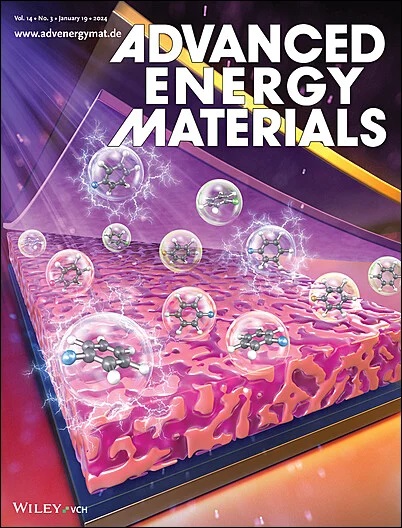Enabling Reversible O1 Phase Transition in 4.8 V‐Level LiCoO2 Through Local Oxygen Coordination Engineering
IF 24.4
1区 材料科学
Q1 CHEMISTRY, PHYSICAL
引用次数: 0
Abstract
Pushing LiCoO通过局部氧配位工程实现4.8 V级LiCoO2中O1可逆相变
将LiCoO2 (LCO)推向更高的充电截止电压是实现更高能量密度的有效途径。然而,这种高压操作加剧了氧氧化还原反应和O-Co-O板的不可逆滑动,从而导致LCO的结构崩塌和化学不稳定。本文提出了一种局部氧配位优化策略,通过引入过渡金属(TM)‐O‐TM结构来实现4.8 V LCO中O1相的可逆转变。这些结构是通过在晶格中掺杂Ni、Fe和Al形成的,其中Ni/Fe作为Li层内的支柱,稳定了深度脱插结构,从而促进了4.8 V下可逆的H1 - 3/O1相变。此外,局部氧环境的交替导致高自旋态Co3+的比例增加,减少了Co3+ 3d - t2g和o2p轨道之间的杂化,从而减轻了阴离子氧化还原反应。因此,抑制了晶格氧损失和有害的表面相退化,从而防止了电池极化电压的增加,增强了可逆的H1‐3/O1相变。最终,这大大减轻了内应力的积累,并防止了重复深度(去)锂化过程中的大块失效,从而显著提高了优化后的LCO阴极在4.8 V超高电压下的容量保持能力。
本文章由计算机程序翻译,如有差异,请以英文原文为准。
求助全文
约1分钟内获得全文
求助全文
来源期刊

Advanced Energy Materials
CHEMISTRY, PHYSICAL-ENERGY & FUELS
CiteScore
41.90
自引率
4.00%
发文量
889
审稿时长
1.4 months
期刊介绍:
Established in 2011, Advanced Energy Materials is an international, interdisciplinary, English-language journal that focuses on materials used in energy harvesting, conversion, and storage. It is regarded as a top-quality journal alongside Advanced Materials, Advanced Functional Materials, and Small.
With a 2022 Impact Factor of 27.8, Advanced Energy Materials is considered a prime source for the best energy-related research. The journal covers a wide range of topics in energy-related research, including organic and inorganic photovoltaics, batteries and supercapacitors, fuel cells, hydrogen generation and storage, thermoelectrics, water splitting and photocatalysis, solar fuels and thermosolar power, magnetocalorics, and piezoelectronics.
The readership of Advanced Energy Materials includes materials scientists, chemists, physicists, and engineers in both academia and industry. The journal is indexed in various databases and collections, such as Advanced Technologies & Aerospace Database, FIZ Karlsruhe, INSPEC (IET), Science Citation Index Expanded, Technology Collection, and Web of Science, among others.
 求助内容:
求助内容: 应助结果提醒方式:
应助结果提醒方式:


